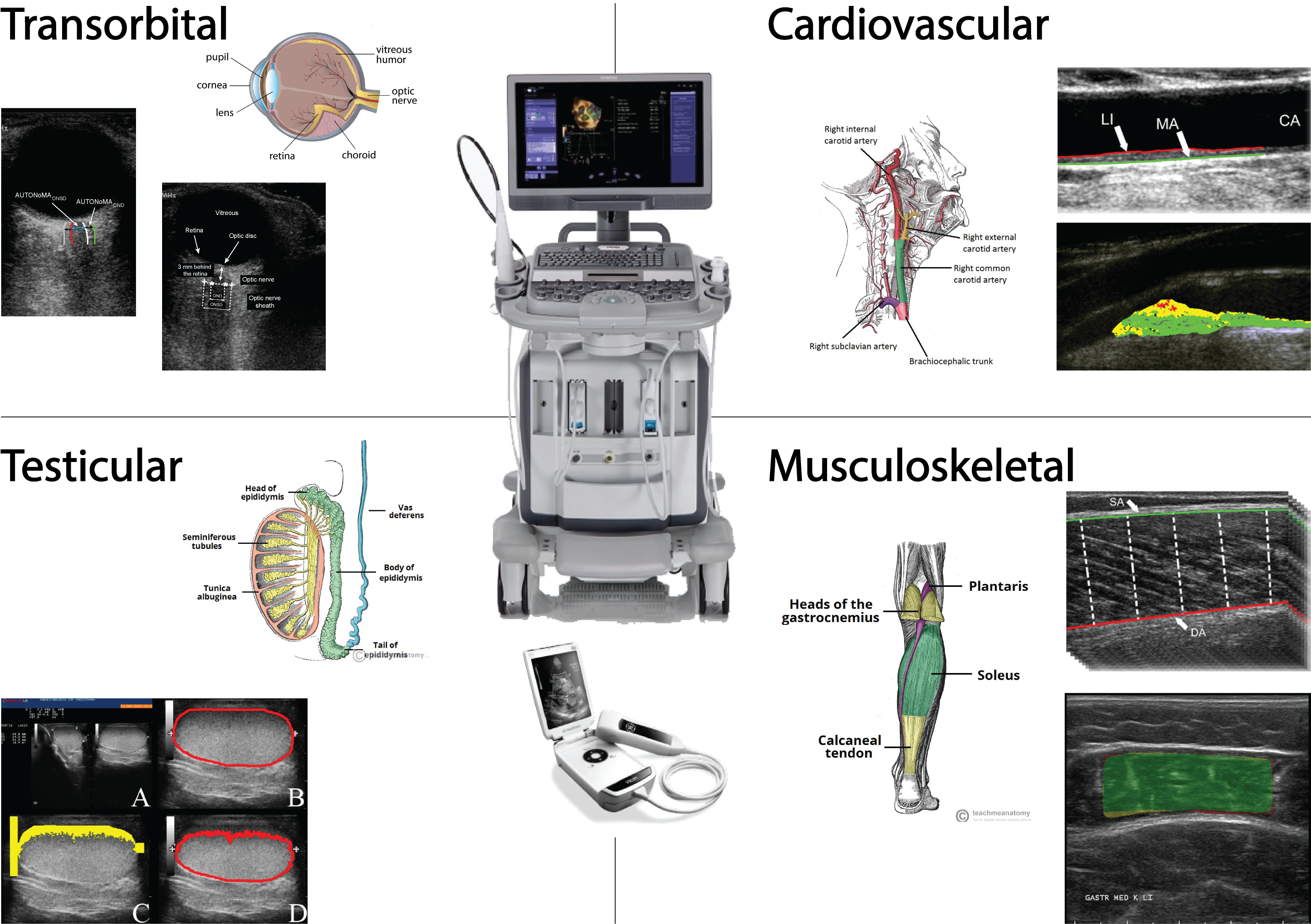
Topic:
Ultrasound imaging is widely used in medicine thanks to its many advantages: this versatile imaging technique does not use ionizing radiation, is inexpensive, allows real-time imaging, and is portable, allowing for crucial point-of-care applications. On the downside, it is highly dependent on the operator and requires skilled trained professionals for acquiring the image and interpreting it. Computer-aided-diagnosis systems can mitigate part of this drawback by providing automatic solutions for segmenting areas of interest and for computing measurements and radiomic features which aid the final diagnosis.
Beginning as pioneers for the completely automatic measurement of the intima-media thickness and plaque characterization in carotid artery ultrasound images for cardiovascular risk assessment, this line of research has been further extended to numerous other applications. In particular, it now includes:
- Musculoskeletal ultrasonography for texture analysis and for the automatic segmentation of muscles in longitudinal and transversal images using traditional and deep learning techniques. The automatic segmentation is employed for the subsequent automatic measurement of muscle thickness (longitudinal images) and the cross-sectional area and mean gray scale value among other texture features (transversal images), which are key in distinguishing normal from pathological muscle images.
- Transorbital ultrasonography for the automatic segmentation of the optic nerve and the consequent measurement of the optic nerve diameter and optic nerve sheath diameter, which are helpful for the estimation and monitoring of increased intra-cranial pressure.
- Testicular ultrasonography for radiomics analysis and in particular for measuring gonadal function. First-order and higher-order texture features are used to correlate B-mode image features with gonadal functions and semen parameters, capable of representing a mirror of the pituitary-gonadal homeostasis in terms of reproductive function.
People:
Collaborators:
Recent publications:
Kristen M.Meiburger, Guillaume Zahnd, Francesco Faita, Christos P. Loizou, Catarina Carvalho, David A. Steinman, Lorenzo Gibello, Rosa Maria Bruno, Francesco Marzola, Ricarda Clarenbach, Martina Francesconi, Andrew N. Nicolaides, Aurelio Campilho, Reza Gh
Ultrasound in Medicine and Biology
10.1016/j.ultrasmedbio.2021.03.022
K. M. Meiburger, F. Marzola, G. Zahnd, F. Faita, C. P. Loizou, N. Lainé, C. Carvalho, D. A. Steinman, L. Gibello, R.M. Bruno, R. Clarenbach, M. Francesconi, A. N. Nicolaides, H. Liebgott, A. Campilho, R. Ghotbi, E. Kyriacou, N. Navab, M. Griffin, A. G. Pa
Computers in Biology and Medicine
10.1016/j.compbiomed.2022.105333
Kristen M. Meiburger, Andrea Naldi, Nicola Michielli, Lorenzo Coppo,, Klaus Fassbender, Filippo Molinari, Piergiorgio Lochner
Ultrasound in Medicine & Biology
10.1016/j.ultrasmedbio.2020.01.034
Francesco Marzola; Nens van Alfen; Massimo Salvi; Bruno De Santi; Jonne Doorduin; Kristen M. Meiburger
2020 42nd Annual International Conference of the IEEE Engineering in Medicine & Biology Society (EMBC)
10.1109/EMBC44109.2020.9176343